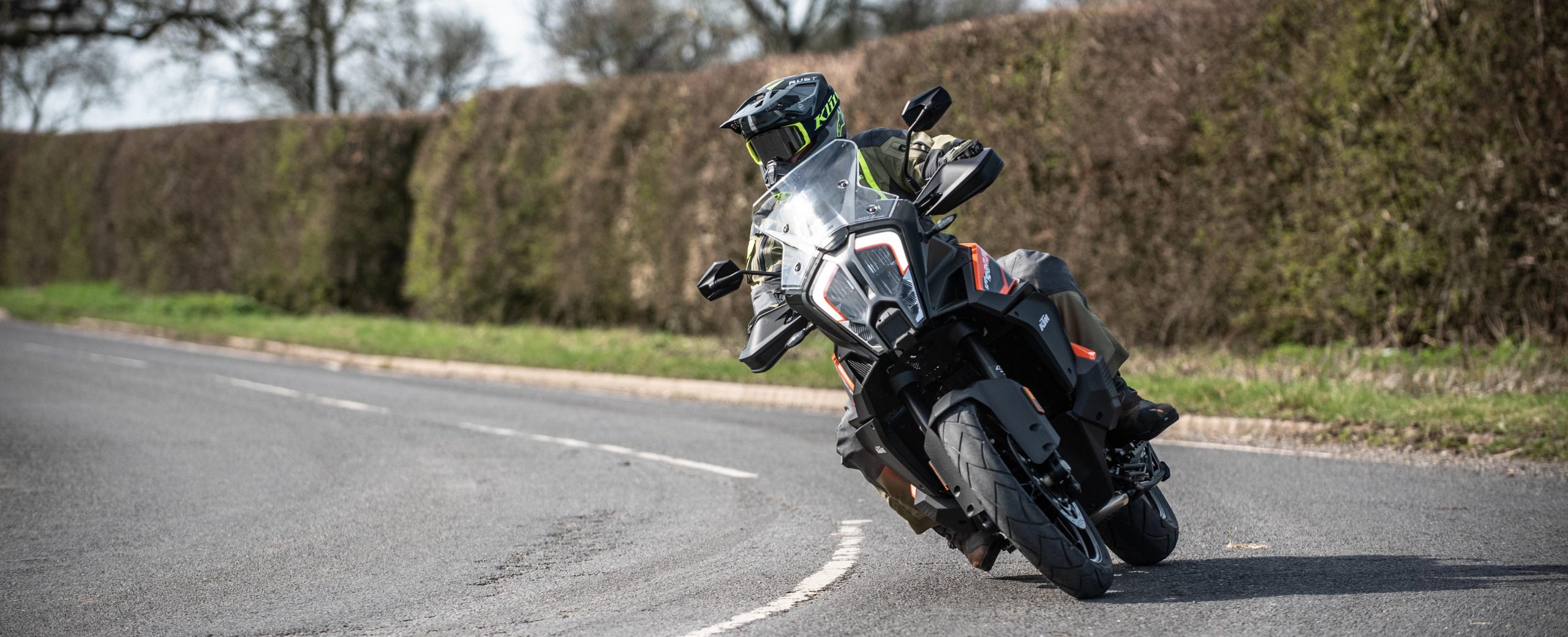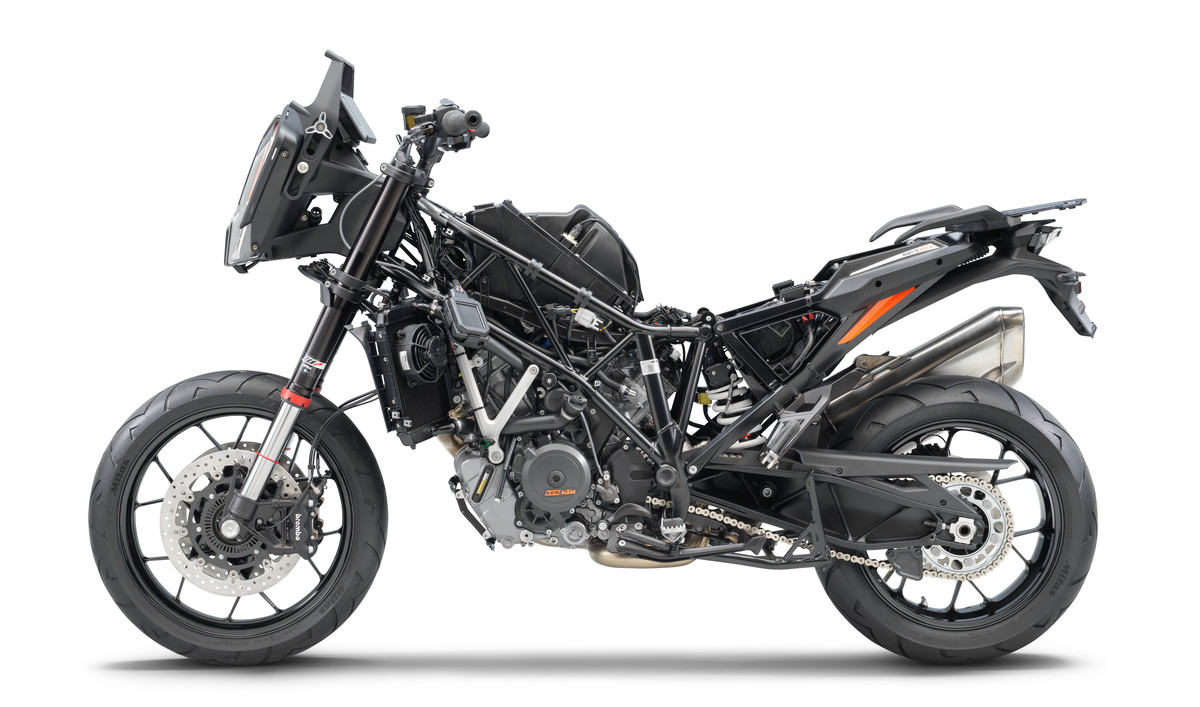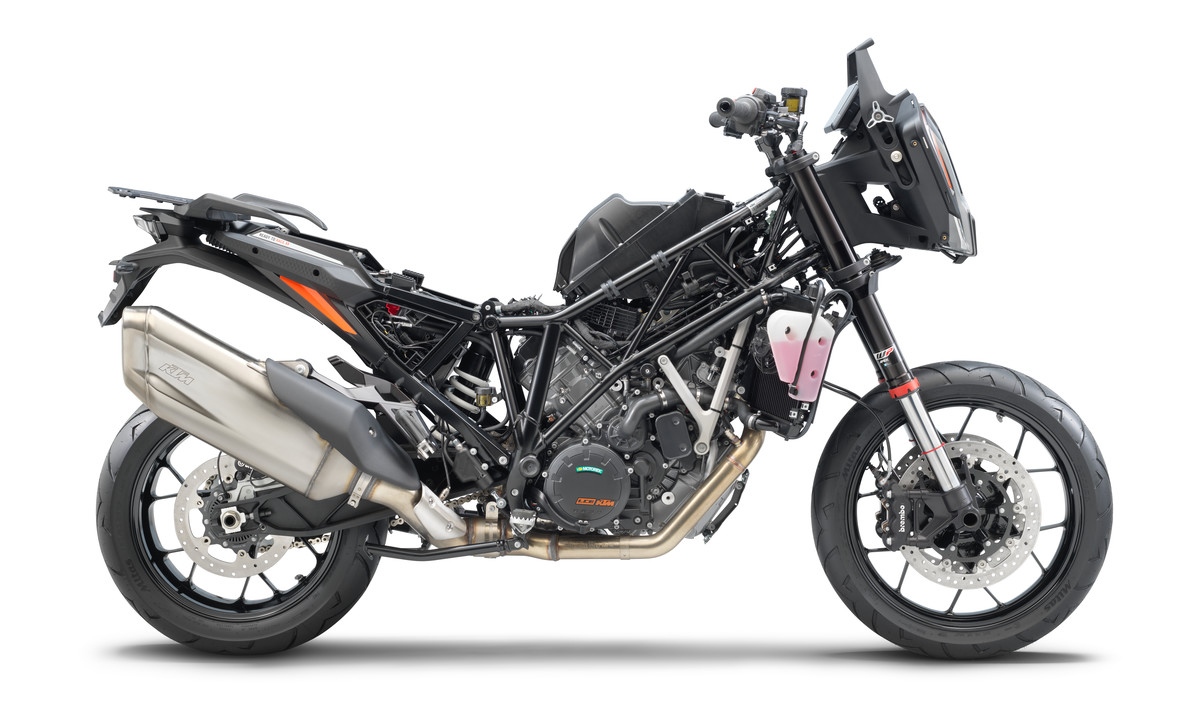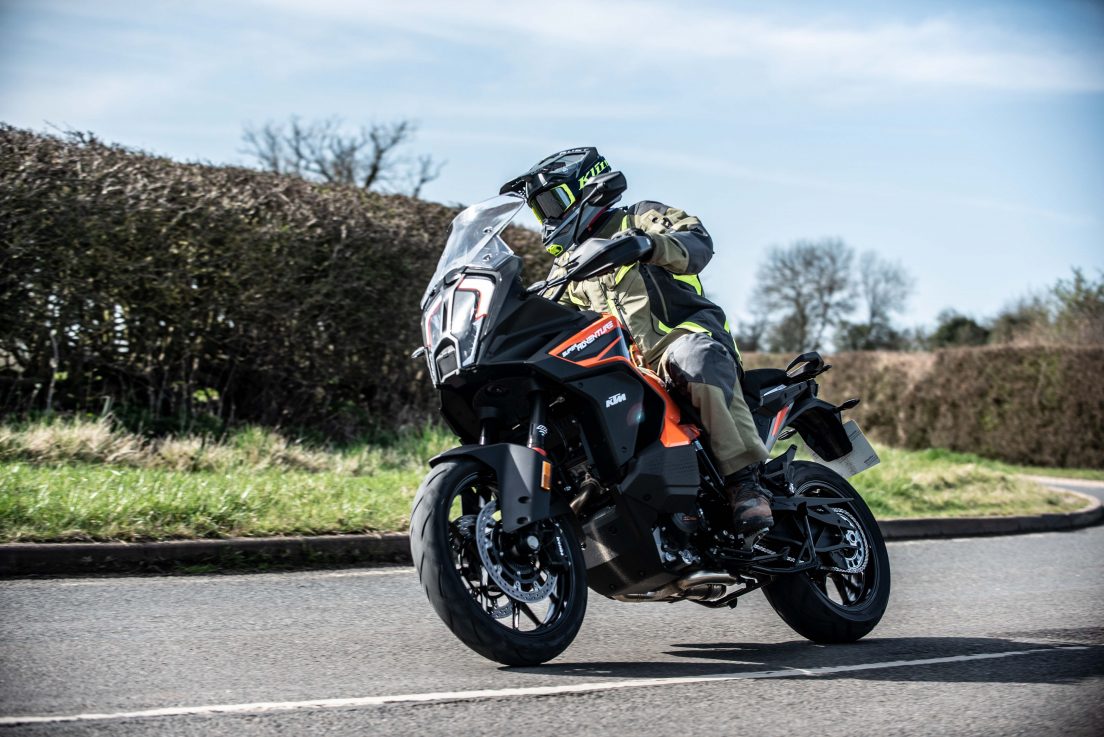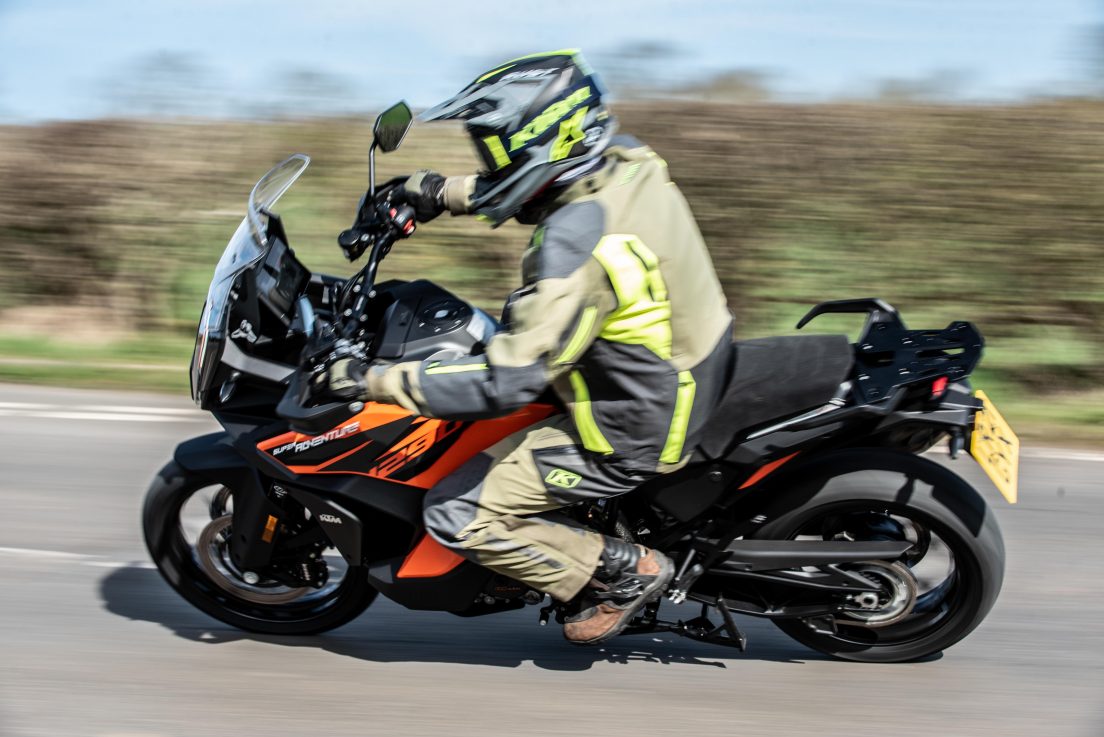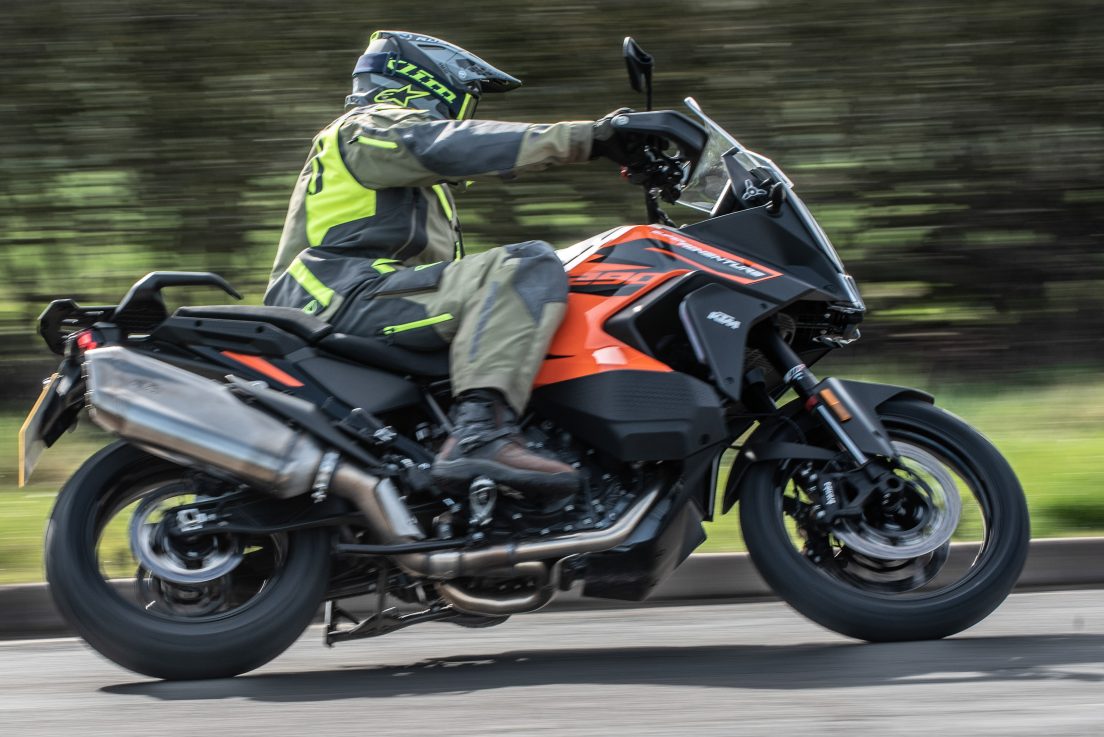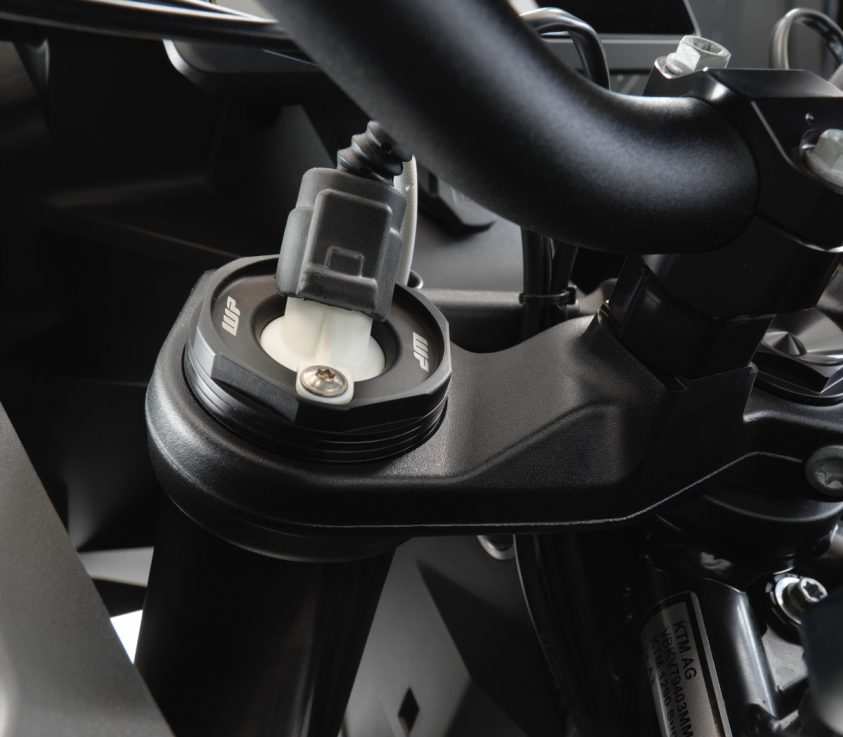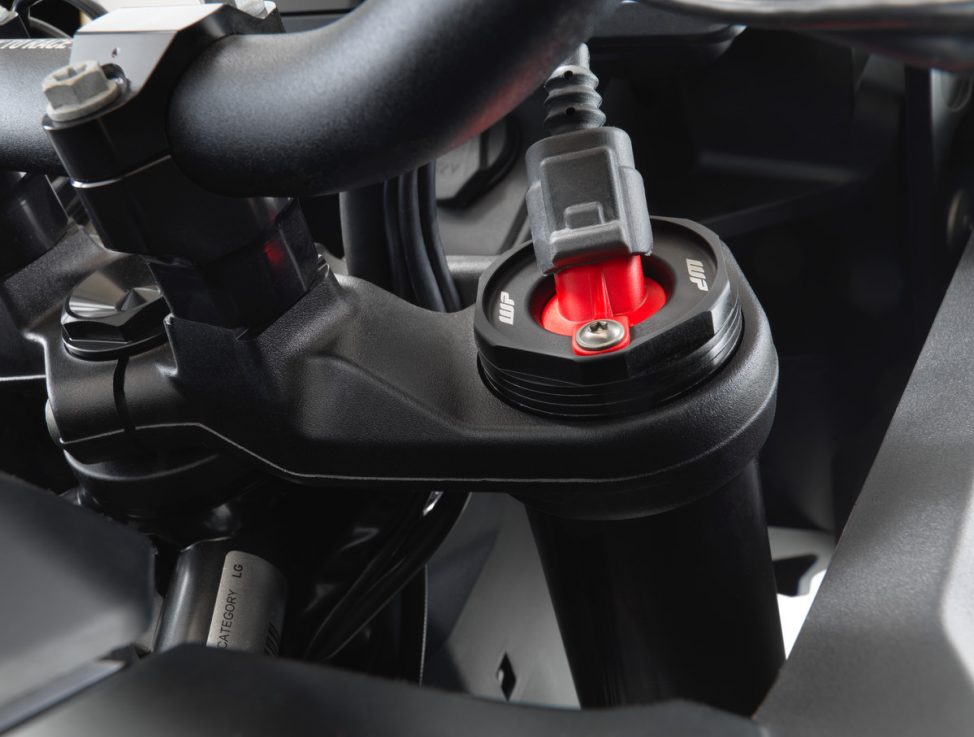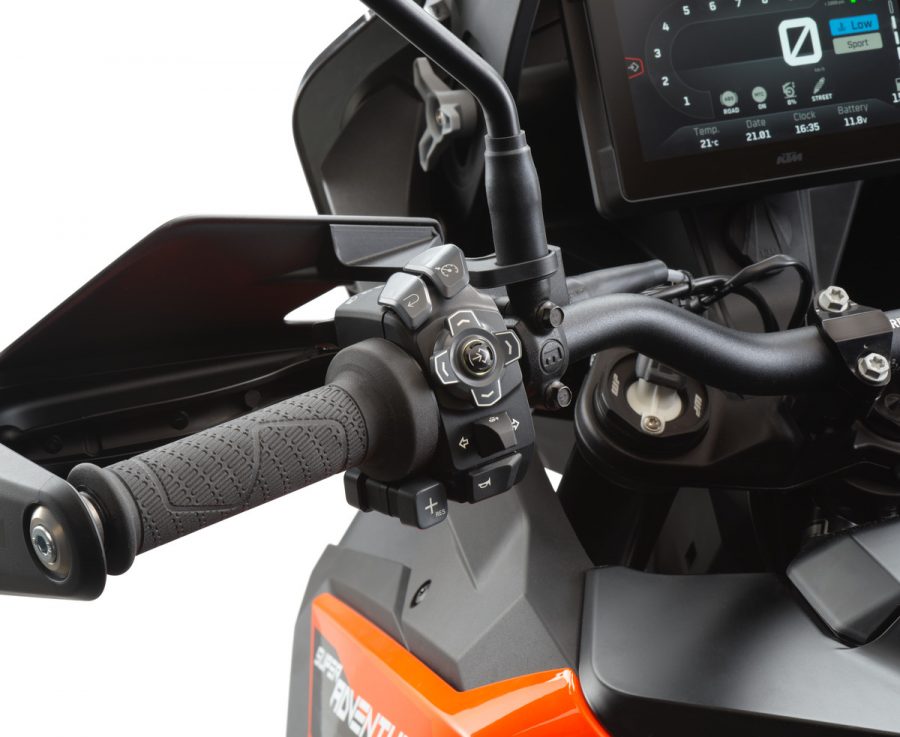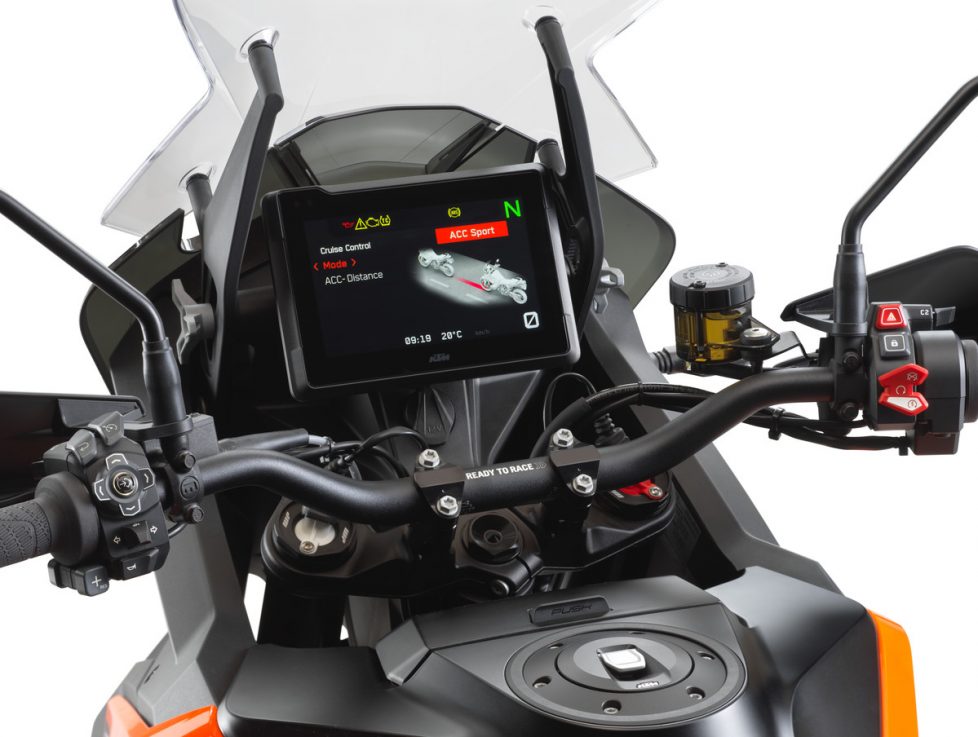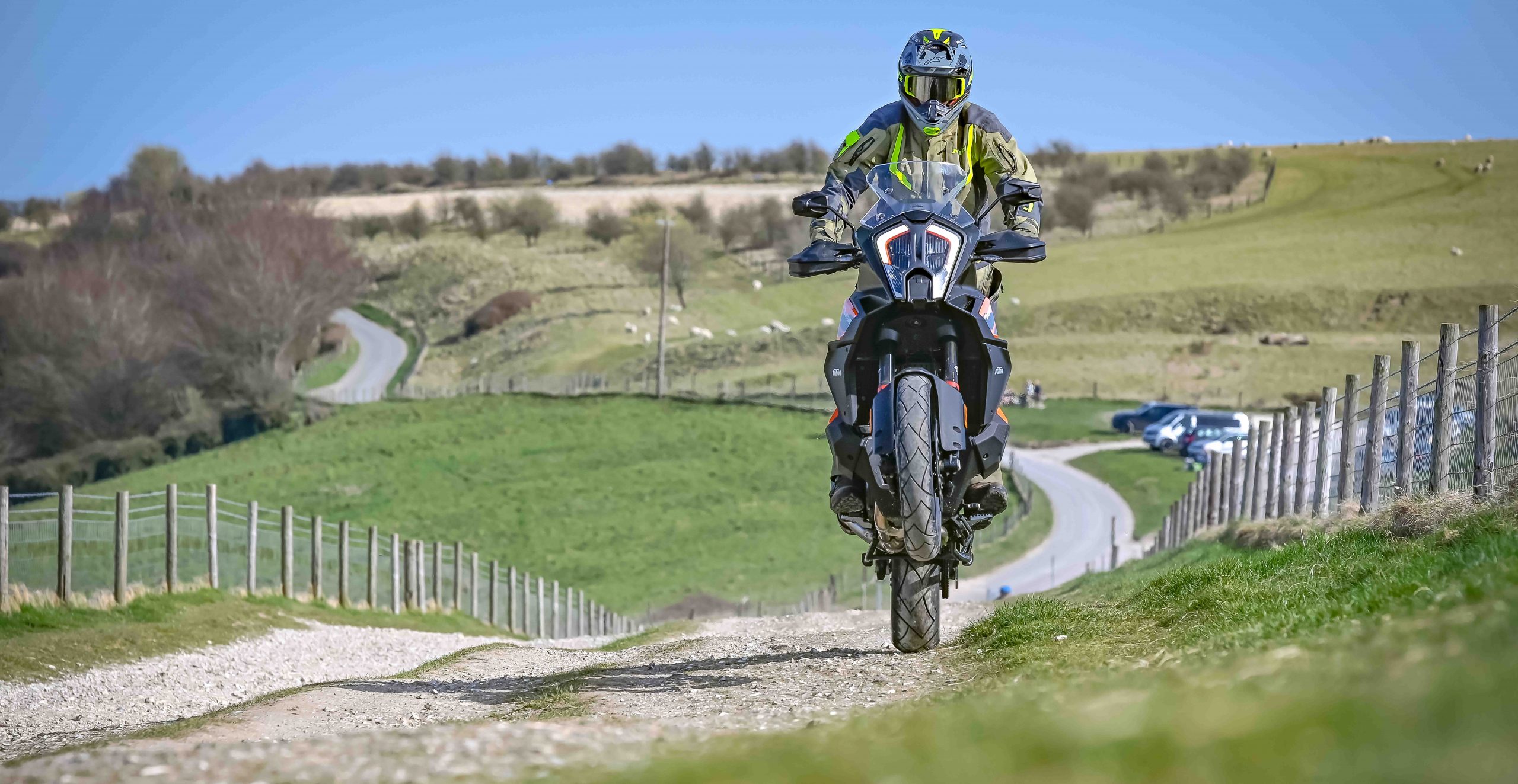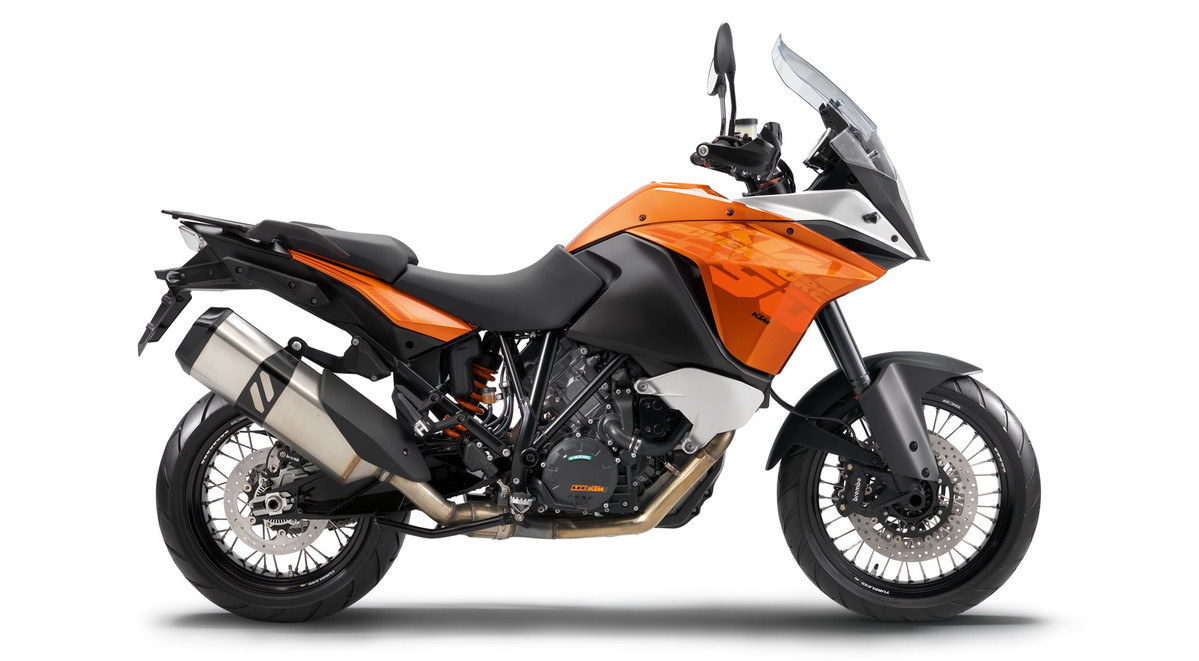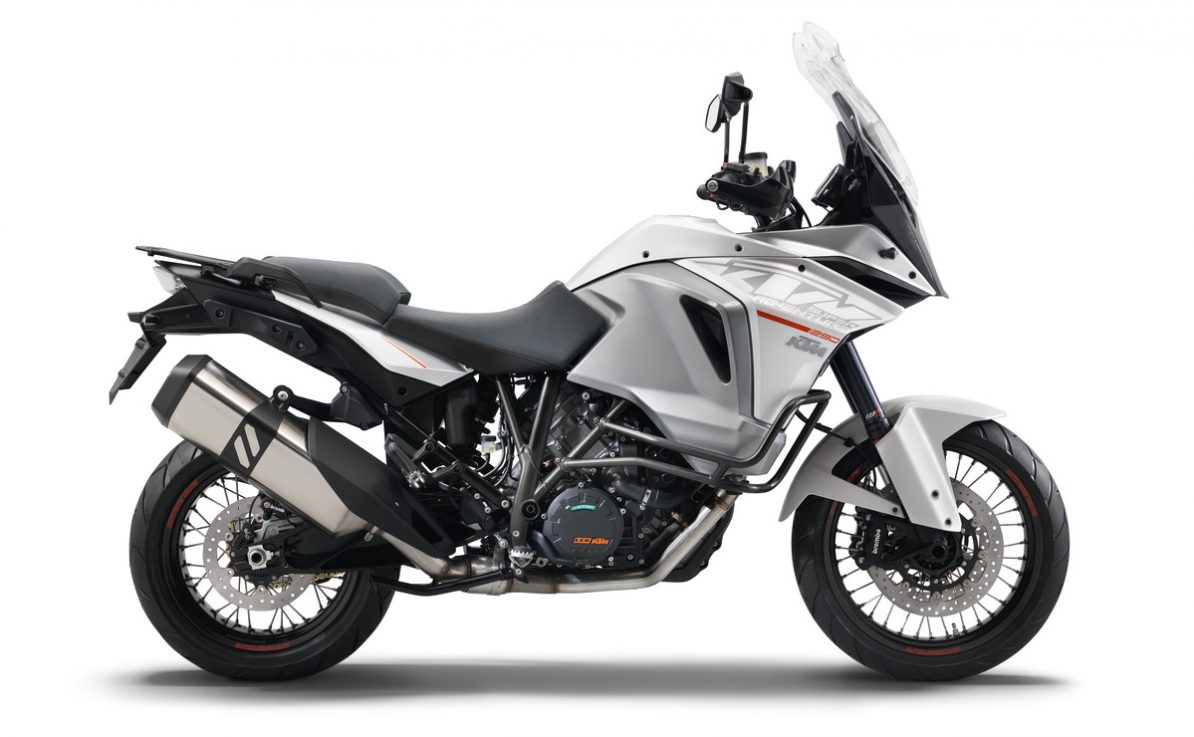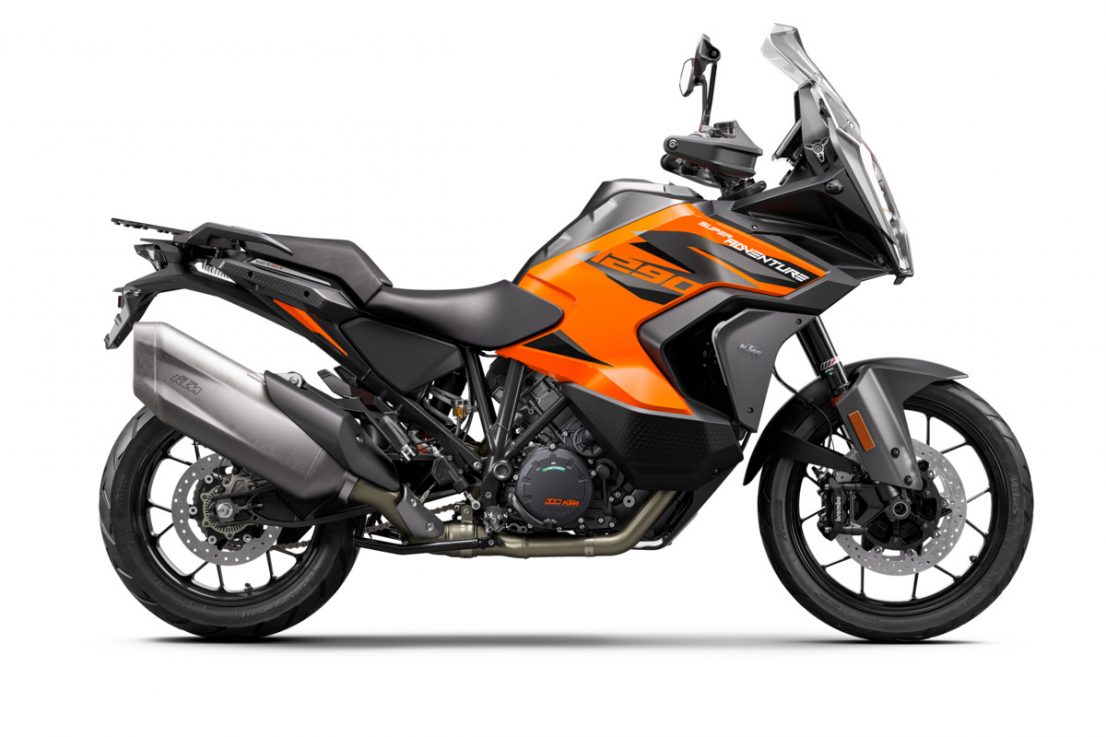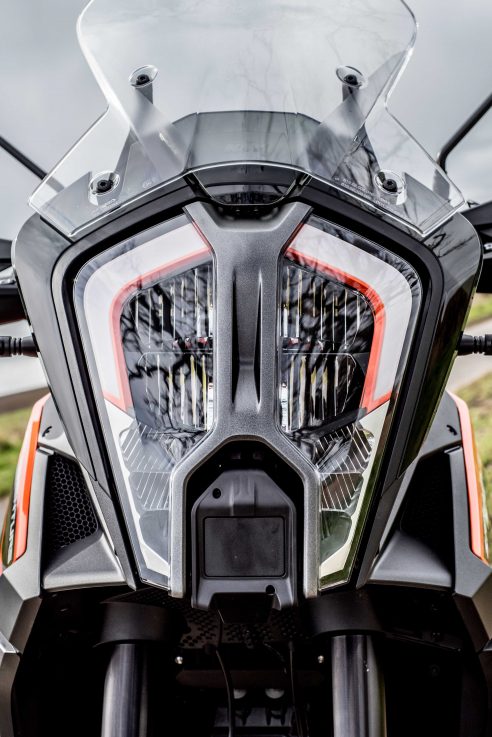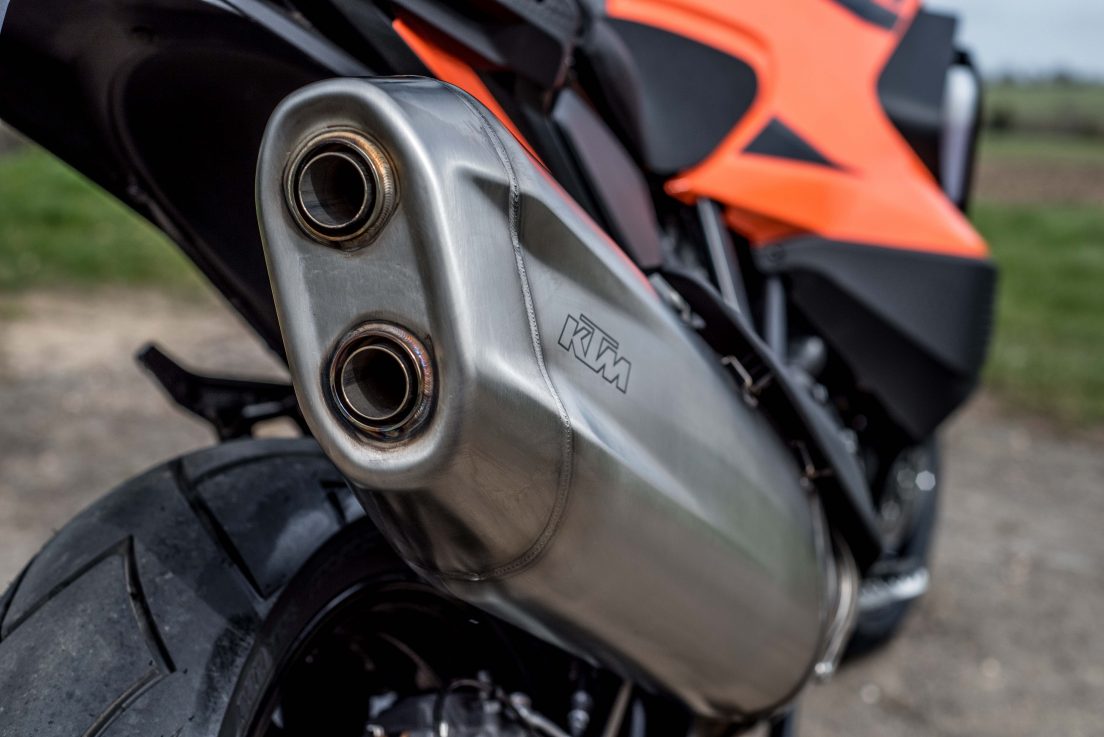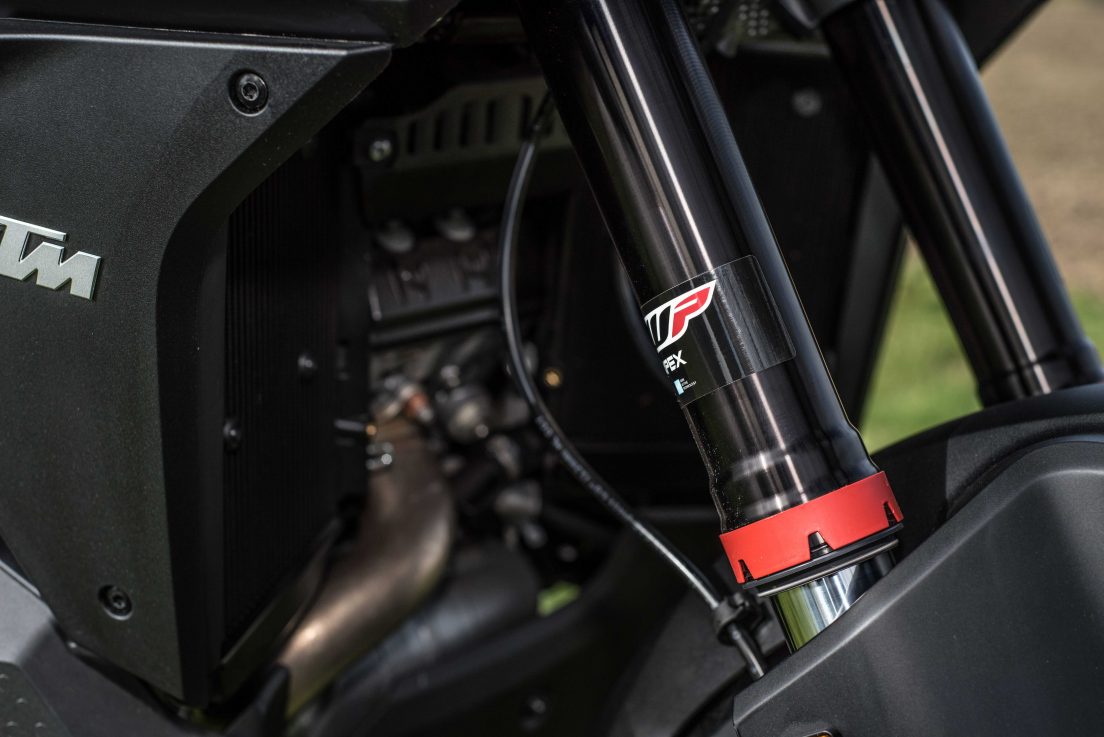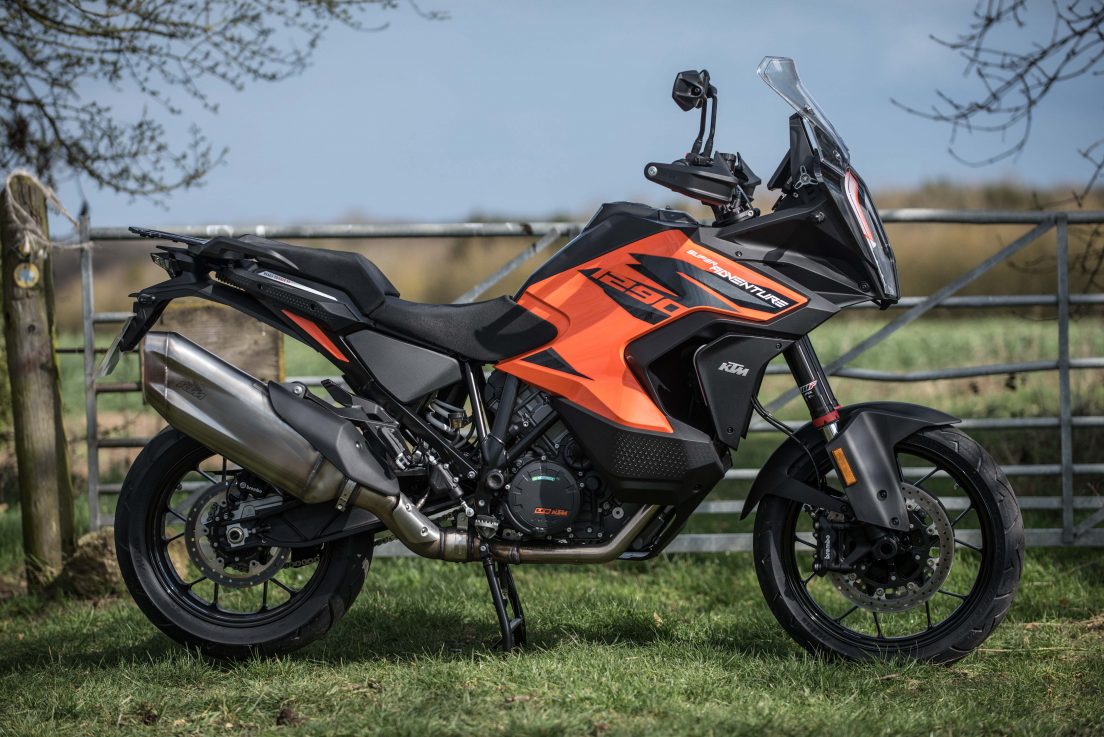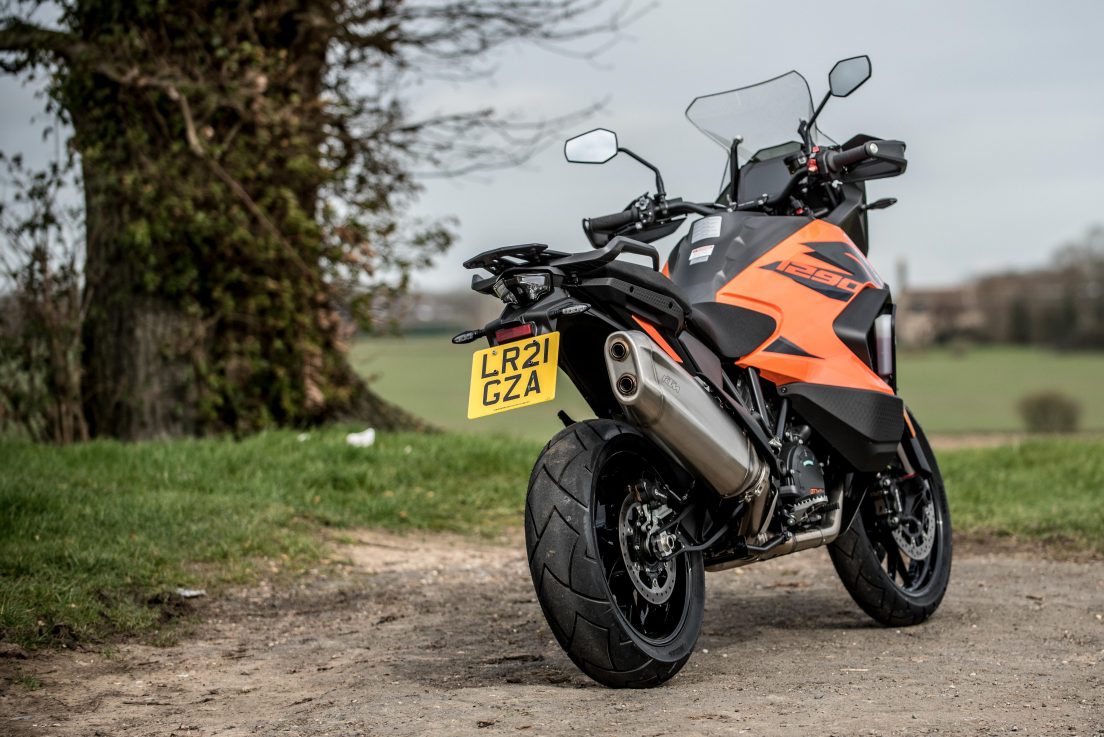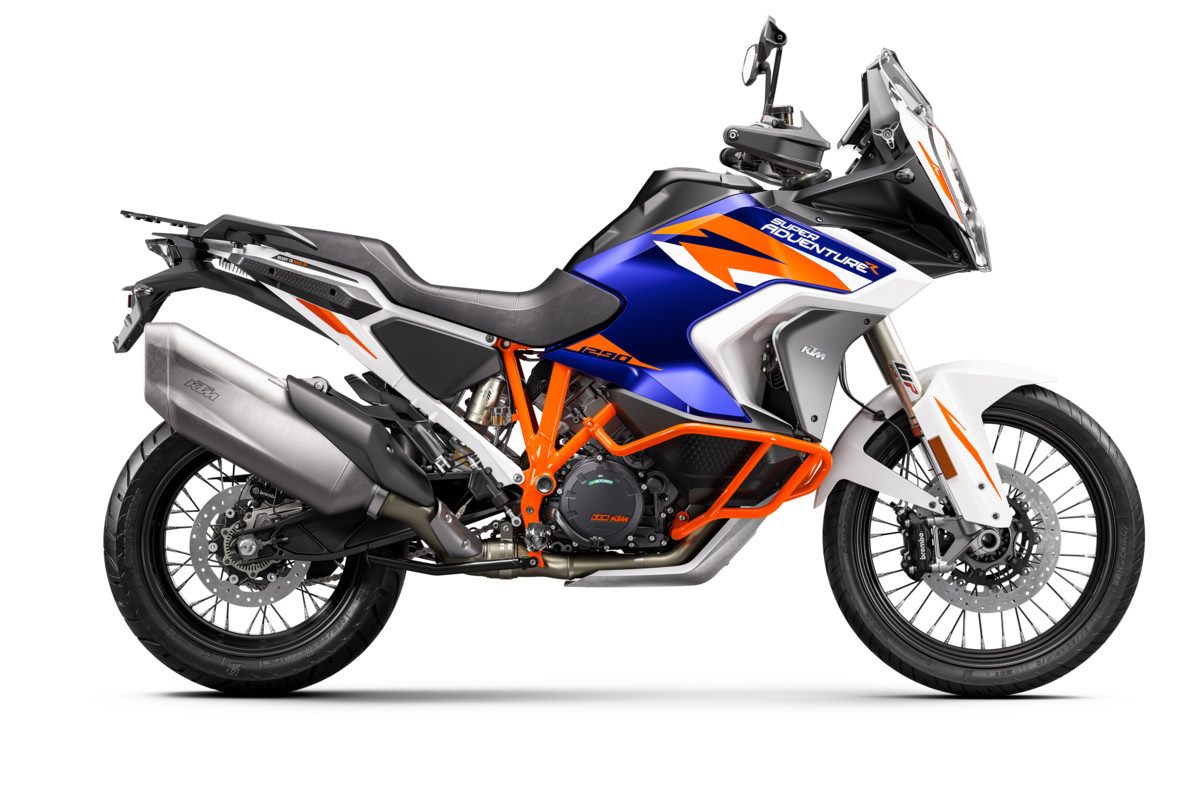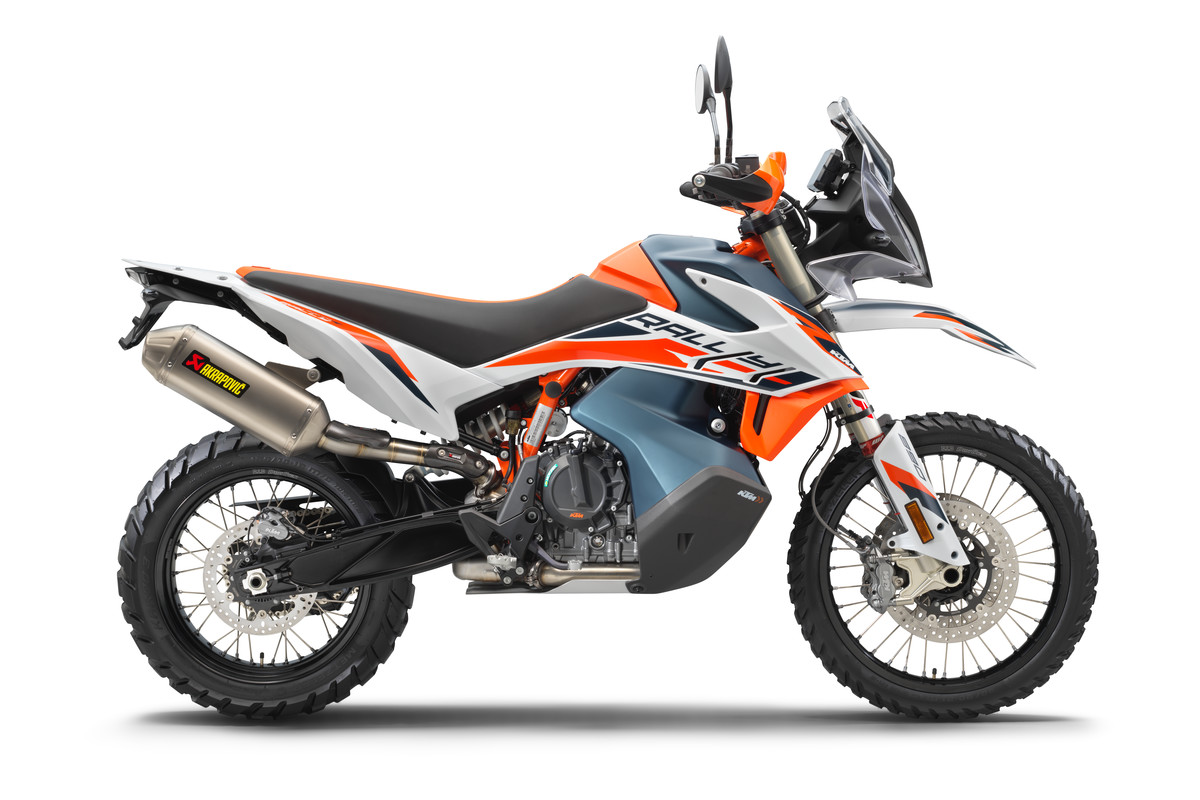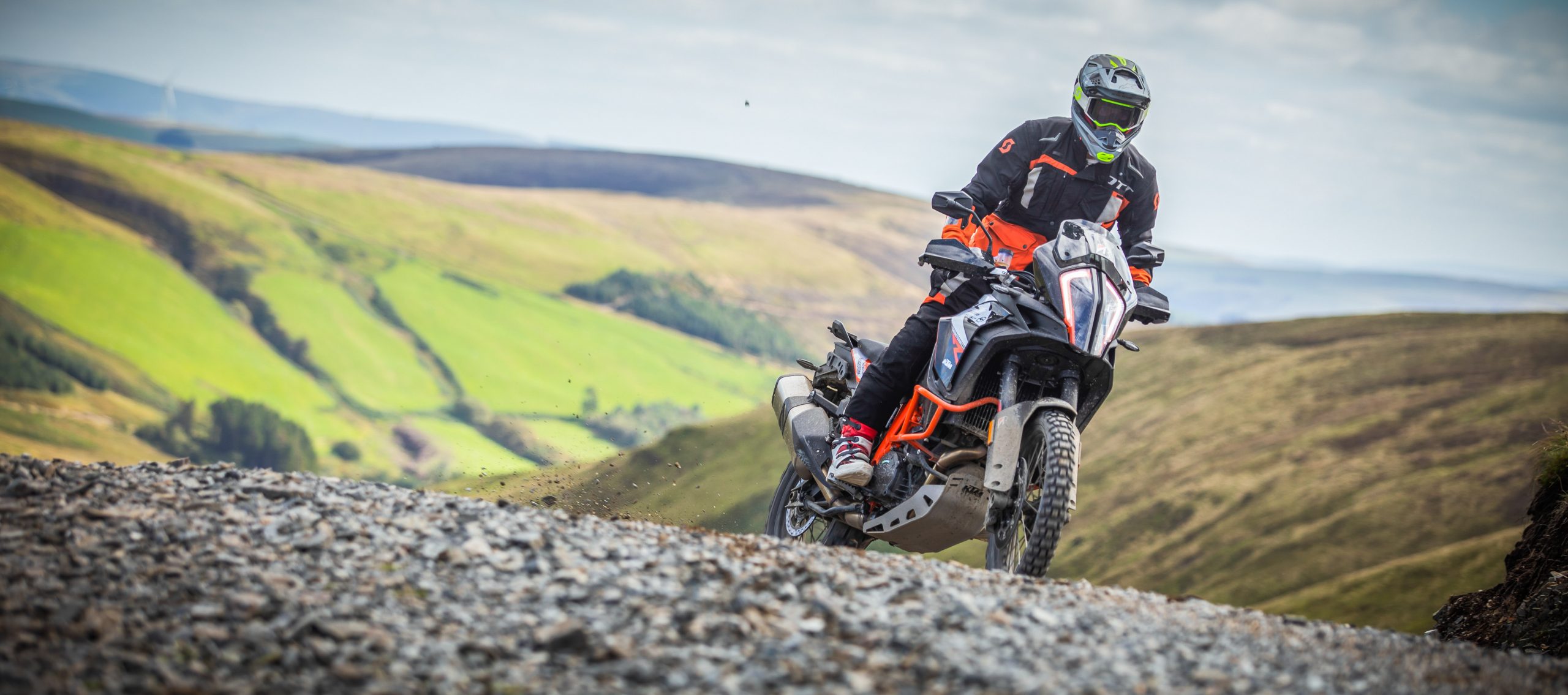words: JB images & video: Too Fast Media
Trying to figure quite where to start this report has been a struggle. Then I remembered a comment I’d made myself about these bikes, and that gave me context. And that is to say the KTM 1290 Super Adventure is a ‘two seater’. Arguably when evaluating adventure bikes you have to make that fundamental delineation: there are single seaters and two seaters.
We’ve all read comments from social media pundits (experts?) decrying the 1200+cc super adventures as not being real adventure bikes, being too big, too powerful and just too much to be taking up rough trails. Well, they’re missing the point. You see when your wife/partner wants to join you on the trails, on the grand tours, those ‘real’ adventure bikes simply can’t cut it – not enough space, not enough engine and almost certainly not enough saddle. And that is (partly) why we have these big guns. If you want to share that adventure experience, in style and comfort, there’s no other way to go about it.
And so having said that, here we are, the 2021 KTM 1290 Super Adventure S. And what a machine it is!
WHERE WE’RE AT
Curiously we are kind of where we were before with the KTM 1290 (as in back in 2017). We’re still at 160hp – ‘you don’t need anymore’ say KTM, and actually here at RUST we’re wondering if you even need that much. And the 1290 is still big, bold and beautiful – there’s been no downsizing, it’s actually heavier than it was by five kilos. So, like all super-adventure bikes you are at first stunned by the sheer size of the thing. But it does still represent the ultimate in adventure by KTM. It does still do exactly what its predecessor did, only slightly better, while keeping to the right side of the ever-tightening emissions requirements of the EU and others. So it’s improved, it’s apparently 90% changed… yet nothing’s changed.
Having already reported on the changes (here), we’ll not go into the detail again, but instead crack on with the ride report and let you know how the changes have, well, changed the ride.
SWEET HANDLING
To begin with, KTM has certainly gone to serious lengths to improve the 1290’s handling. The changes to the geometry have made a significant improvement. Having moved the steering head back by 15mm, by pulling in the head angle by 1.3º and by rotating the engine forward by 2º there’s been a measurable quickening in the steering responses. I can’t say I was unimpressed by the last version – it was a cracking ride – but the new chassis certainly feels to deliver, with quicker responsiveness to steering inputs. I noticed there’s no feeling of pulling on the ‘bars to get the big beast to lean over, the turning moment seems to come somewhere mid bike, between your legs, so like on a dirt bike it feels like you’re weighting the pegs to turn, and even that feels to be a subconscious thing. Helping this is the new fuel tank, which distributes the 23 litres far lower, bringing down the centre of gravity. So even swinging through back lanes it feels very immediate, very easy – quite a feat on a bike this big.
The suspension is also very good. There’s been a lot of effort put into the WP Apex semi-active units that you find uniquely on the S model (the R carries conventional suspension). The electronic adjustment works on the fly and you can swap between comfort, street and sport damping modes. Independently you can also adjust the preload, so if you want a stiff, almost road race setup, then between 100% preload and the sport damping mode you can have a high-riding and super-firm setup that would befit a BSB racer. Going the other way, with minimum preload and the comfort setting the bike feels a good two inches lower and super-squidgy to the point it almost feels like a lilo on the waves – I moved on from this setting after just a few minutes to avoid sea sickness…
Bottom line here is, whatever your preference it would seem KTM have got you covered – and all at just the touch of a button.
STRONG MOTOR
One of these days I’ll take a 1290 to a dynometer. I want to see how it administers its 160hp. I’m sure it’s all there, but equally I’m sure there are only a very few occasions when it actually lets you loose with the full complement. Somewhere between the rider modes and the traction control – not to mention the six-axis lean sensor – that 160 gets watered down.
Take the rain mode to begin with, that mode gives you a maximum of 100hp to play with, as does the off-road mode. Street and Sport are said to give you full power. However, we all know if we gave the 1290 a big handful of throttle in first gear it should flip. Only it doesn’t. That six-axis thing feels the front rise and immediately bleeds off some power. Likewise the (MTC) traction control stops the rear spinning out uncontrollably. So, as you go full gas on the throttle the bike’s computing brain simultaneously goes into full control mode, keeping you upright and on two wheels. (If you want to see what an unfettered 160hp looks like watch some 500GP race footage from the 1980s – and see how the world’s very best road racers regularly got rodeoed into A&E.) Like KTM said, there’s no need for more than 160hp (because you’re not using it now!).
Notwithstanding, this is one very quick motorcycle, it’s quick like a supersport. Helping this is an improved QS+ quickshifter. Anyone (anyone?) who read my long termer reports on the last 1290 will know I was not a fan, I turned the quickshifter off on that bike, it was just too sensitive. But this latest iteration feels to be spot on. Full throttle upshifts are so good, so damn addictive, but it does medium speed shifting just as easy. I have to say, being old (school) I still like to use the clutch up and down the ‘box, mentally it helps synchronise brain, throttle hand and left foot, but increasingly once retrained you can just tap away with your toes and let the bike do the rest. As well I should mention that the latest PANKL gearbox shifts so lightly and so precisely, it is a joy to use.
As far as the modes go, they work. Rain and Street modes certainly take the edge off the performance making the ride less stressful and are good for urban riding. Again, being a contrary sort, I liked the Sport mode best for just about everything. In this mode there’s no lag in the throttle response and what you give is what you get, and I preferred the feeling of being right on point, knowing what was coming in that moment. As well, in this mode the bike felt most alive. I’d like to say more about the Rally mode but I tell you, on the road (we didn’t ride dirt on this the S model) it was not optimal and I found myself kangarooing about somewhat.
BETTER ACCOMMODATION
KTM has also gone to some lengths to improve the rider comforts. The 1290 now has a screen worthy of the name. It’s probably a good two or three inches taller than the last effort but being clear and neatly moulded is quite unobtrusive. I had no problem with wind buffeting, and I liked the simple manual adjustment – it’ll raise by 55mm.
The move to two radiators and all new ducting also seem to work very well. I never heard a fan cut-in all day (and it got up to 24ºC air temperature) and neither did I get roasted chestnuts – as you’ll know, the rear cylinder on the old 1290 really could throw up some heat.
The TFT screen is super-clear and at 7” is the biggest yet, and through Connectivity (with your smart phone) and KTM’s My Ride App it’ll also offer you turn-by-turn navigation. There’s a new switch arrangement on the left handlebar for scrolling through the menus – gotta say I’m not sure if that’s measurably better than the old switch. It still takes a little time to get familiar with all the ‘right button, down button, shut throttle to confirm’ rigmarole that goes with these modern setups. But yes, it’s a good crisp screen even in stark sunlight.
Also (surprisingly) on the ‘like list’ is the new ACC adaptive cruise control. I’m no techie, nor an early adopter, but I have to tip my hat – this works and has value. Just as in your car, you can set your cruise speed, and if you have a late model car (I don’t!) then you’ll also know that via its radar it’ll slow you down when you come upon someone slower in your lane. And this ACC even has adjustability as to how close it’ll allow you to get to the vehicle in front (for instance ‘very close’ if tailgating is your thing – the ‘Audi setting’ as some wag called it). It’s sensitive enough to detect a motorcycle, and when a car did a sudden cut-in, way too close, not only does the ACC close the throttle it hits the brakes for you too. For long autobahn transits it’ll be a boon.
The seat is another new thing. The last one sat at 860mm but this new adjustable one gives you the option of 849 or 869mm so, as KTM said, they’ve lowered the seat height by 11mm and with neat sculpting it is therefore easier to get your feet to the ground. Of course, all three testers at this launch preferred the higher setting as this eased the bend of the knee which felt too acute on the lower setting. Incidentally there was a small problem with the seat suddenly dropping down when in the raised position – something that might be put down to ineptitude among us testers in correctly fitting it, if not hopefully KTM will have resolved this by now. And somehow KTM has come up with 11 seat options in their accessories range so somewhere in that lot there has to be one that suits you perfectly.
THE KTM 1290 (SUPER) ADVENTURE (S) STORY
THE S
As you’ll have no doubt deduced, this is a test of the S model, which is more street oriented with a 19/17-inch cast wheel setup on street-type tyres (in this case Mitas Terraforce Rs – which did a perfectly decent job). The more dirt-oriented R isn’t available for journo testing just yet.
This option (the S) certainly makes good sense if the balance of your riding is heavily weighted to road over trail, and if you’re often riding long trips two-up fully loaded there’s got to be extra security in those wheel/tyre choices as against the 21/18-inch knobblies of the R. But you shouldn’t be missing out on the trail action altogether as there are plenty of 50:50 adventure tyres available in the 19/17 sizes and as the S still operates with off-road and rally modes you can still do your trail thing perfectly well – just not as well as the R.
In all KTM has done, as they explained, a comprehensive job of updating the 1290 Super Adventure. It was needed, BMW’s updated 1250 GS certainly raised the bar, equally Ducati’s latest Multistradas have really impressed – and we haven’t yet tried the new V4. So KTM needed this refresh to keep up. They’ve done a great job, and like I said at the beginning of this story, what we’re talking here is a two-seater, you want serious off-road dynamics head for KTMs 690/790/890 offerings. But if you’re looking for a two-seater adventure bike that’s got serious chops, on road or trail, then you’ve got to have the 1290 Super Adventure S (or R) in your consideration.
A QUICK HISTORY
KTM say the 1290 Super Adventure’s story started in 2013. Which it kind of did, that was when the 1190 Adventure replaced the 990 Adventure – the actual KTM vee-twin adventure story having begun in 2003 with the 950 Adventure. But we can see their point, visually, at least, that 1190 Adventure shares a very similar architecture and silhouette to the current bikes – so yes, origin of the species there.
The first 1301cc 1290 came along in 2015, with the 1290 Super Adventure, which was a bit of super heavyweight version of the vee-twin adv strain, with a 30-litre tank for maxi-travel. It sat at the top of the tree, above the 1190 Adventure and Adventure R.
In 2017 came the second 1290 re-order when KTM launched the 1290 Super Adventure S and 1290 Super Adventure R (S being the street version with 19”/17” wheels and semi-active suspension, while the R – for rough? – was the dirt-biased one with 21”/18” wheels). Meanwhile the previous (2015) 1290 Super Adventure stuck around temporarily, renamed the Super Adventure T (which we’ll take as meaning Tour).
Now for 2021 we have the third generation 1290 Super Adventure. Still with the 1301cc motor, but made Euro 5 compliant and with a much modified chassis, and again in S and R variants.
Year-by-year
2003: 950 Adventure: 942 cc, 102hp, 206kg
2006: 990 Adventure: 999cc, 105hp, 209kg
2013: 1190 Adventure: 1195cc, 148hp, 212kg
2015: 1290 Super Adventure (T): 1301cc, 160hp, 229kg
2017: 1290 Super Adventure S: 1301cc, 160hp, 215kg
2021: 1290 Super Adventure R: 1301cc, 160hp, 220kg



